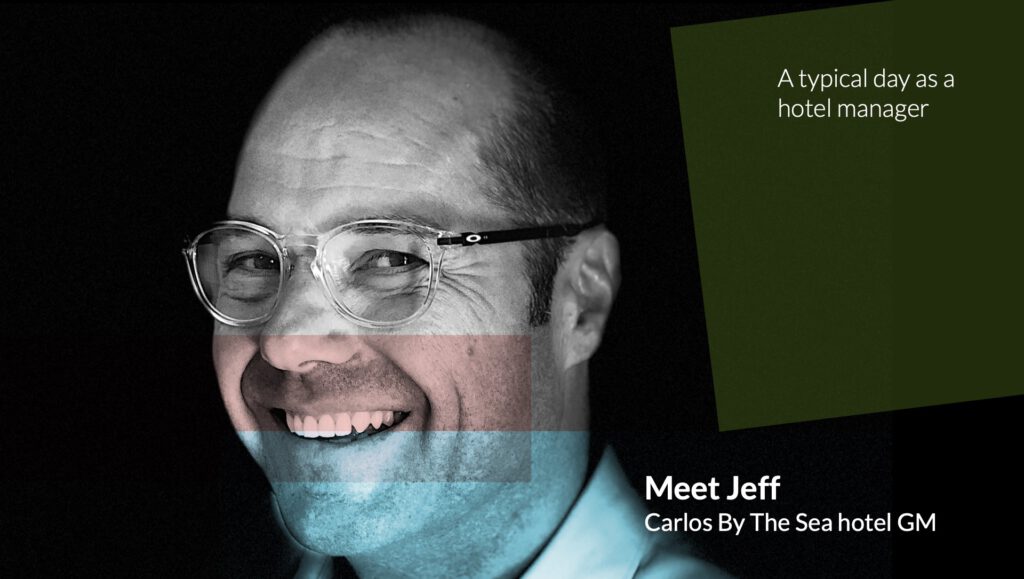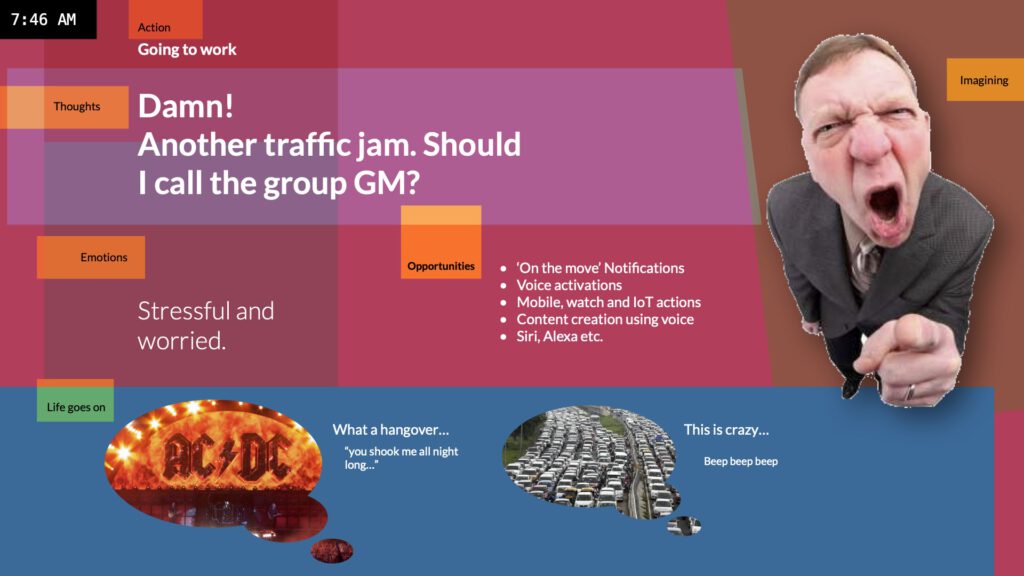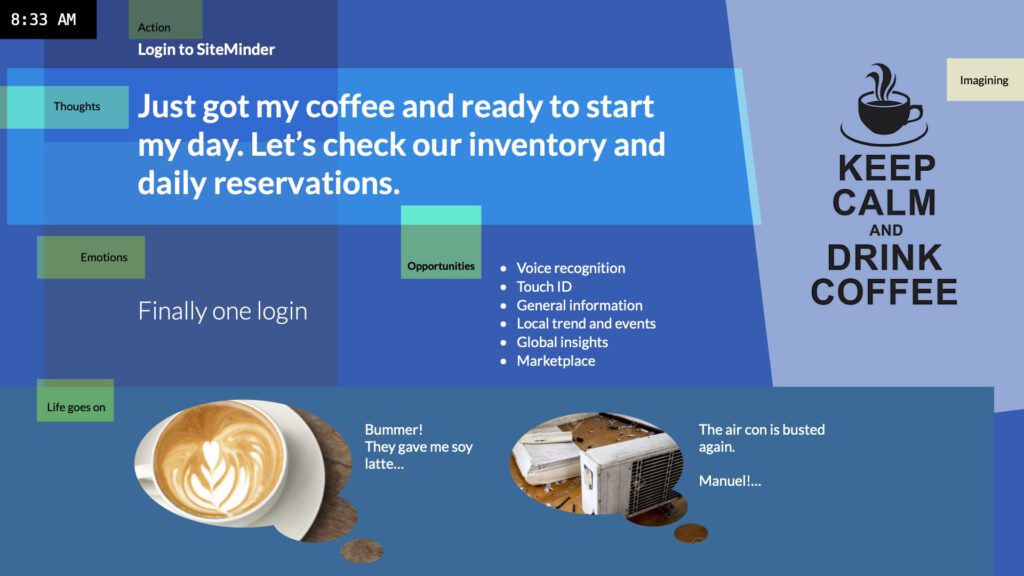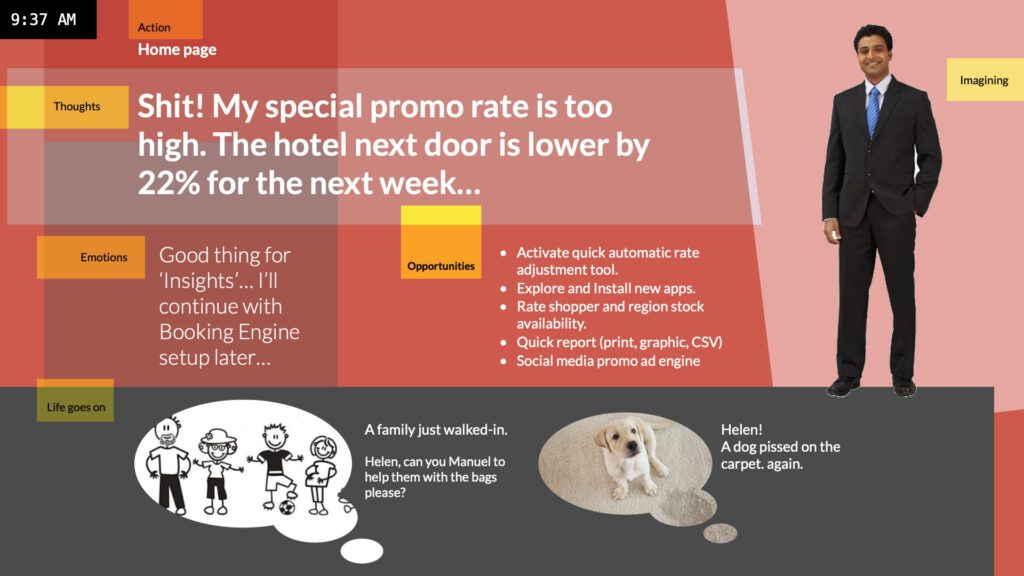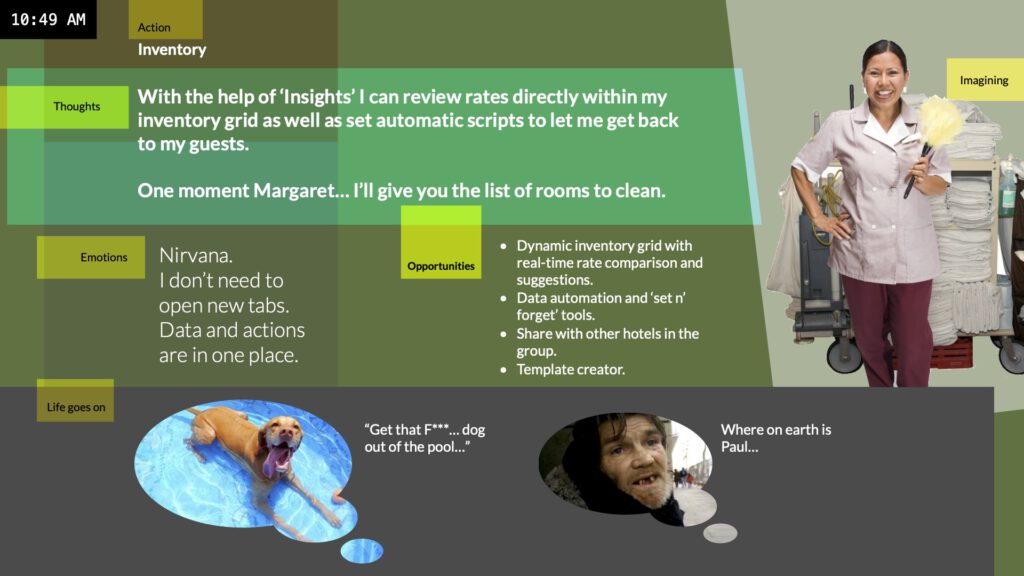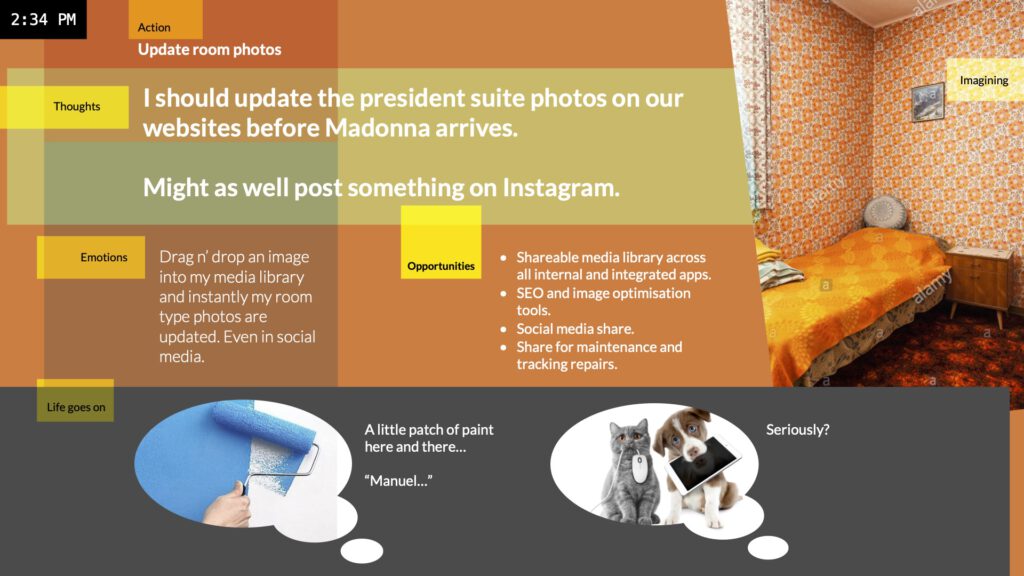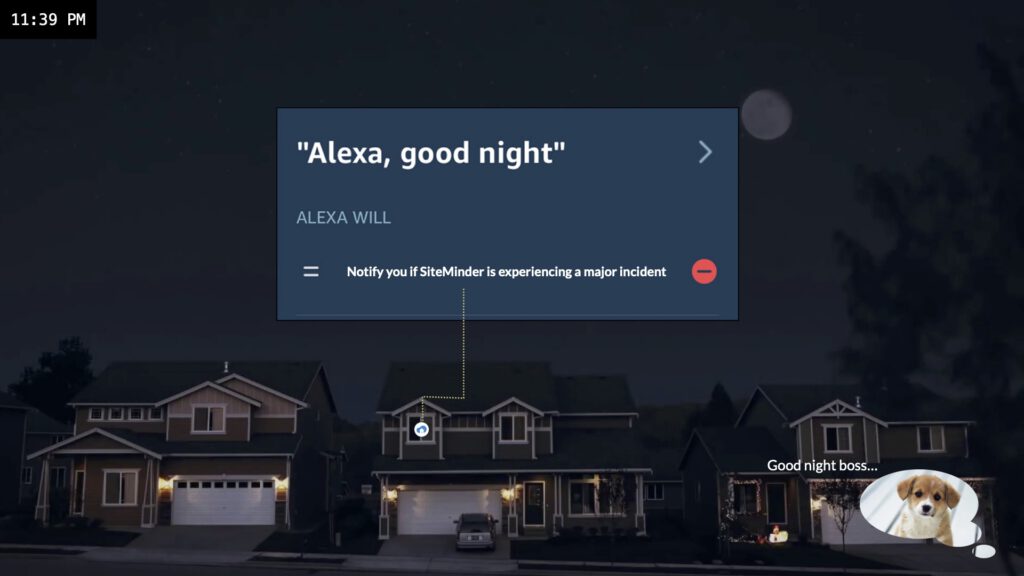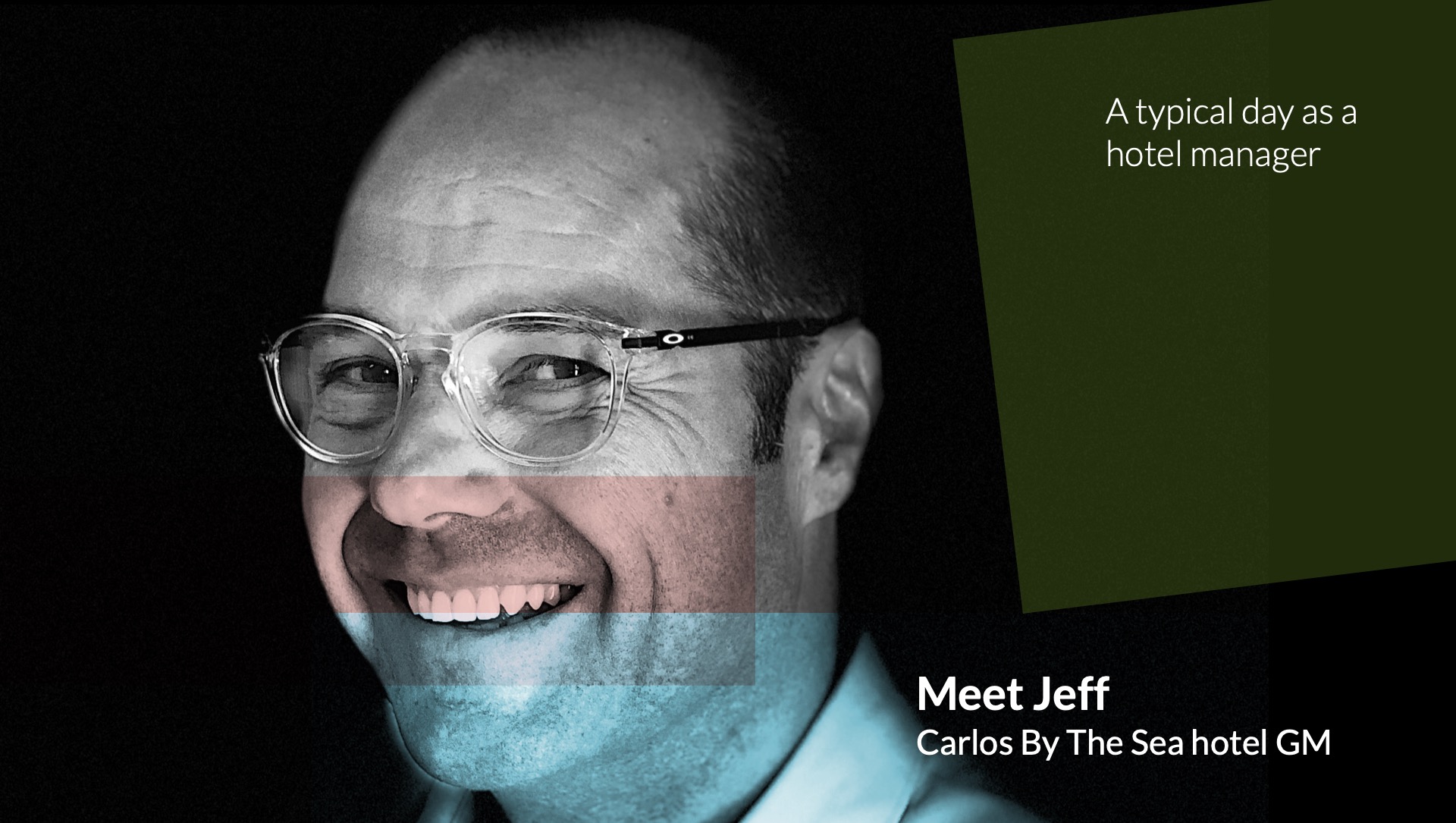Description
One of the best ways to understand customers and the market we’re part of is by telling stories. By looking at a person’s complete life (our existing and potential customers), we can tap into their daily emotional and physical challenges.
Humans don’t switch off or change modes when entering work environments, especially not business owners and sole operators. Things that may have happened the day or night before can substantially impact the next day.
By telling a story that combines some real-world scenarios and some fiction, presented graphically, we can start building a more ’rounded’ user journey and tap into business and product opportunities, risks, short-term product problems, integrations and other factor we might have missed using traditional research methods.
“A day in a life” is a story about a hotel owner operator who juggles different tasks, sometimes around the clock. The story includes emotional thinking and behaviours, daily tasks, interactions, surprises and unexpected issues. The story uses a fiction person that is based on real customer’s stories and experiences.
How to and what to avoid
To avoid a fully fiction story that is nice to hear but gains little interest or traction it is important to provide some real and proven data, current product or service state, realistic location, hotel type and customer persona.
Avoid long stories, too many slides and long timeframes.
Some tips
- Keep the story short, around 24 hours is enough.
- Use a realistic location
- Create a persona that is based on a common customer.
- Create a well-organised slide template with repeatable input sections.
- Add some graphic elements and photos to make it more realistic.
- Don’t be shy. Add some humor and real extreme situations.
- Showcase the story to a team of diverse stakeholders.
- Print and post on a wall in the office.
- Its OK to fail. Even if one thing can be fixed or added, it is already a win.
